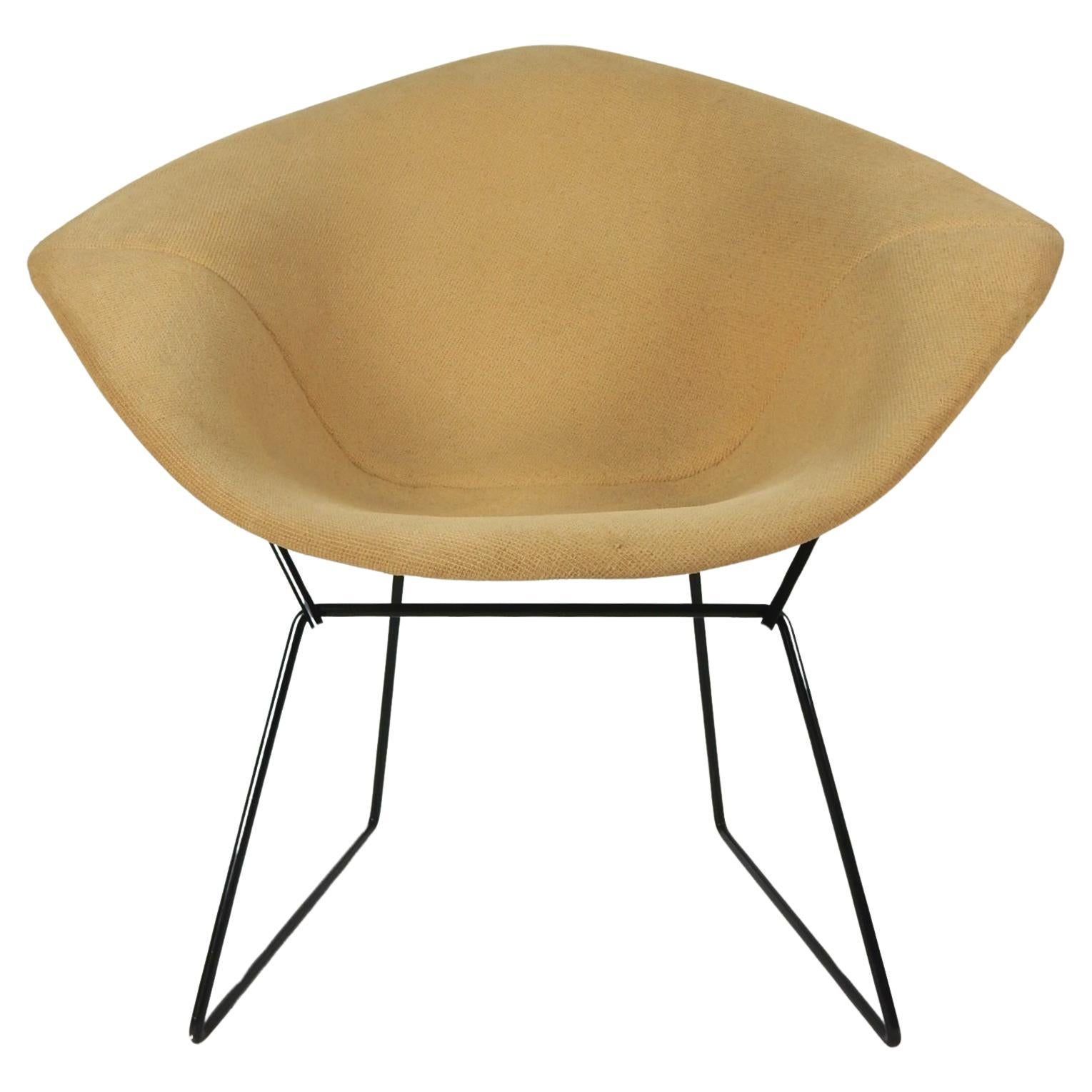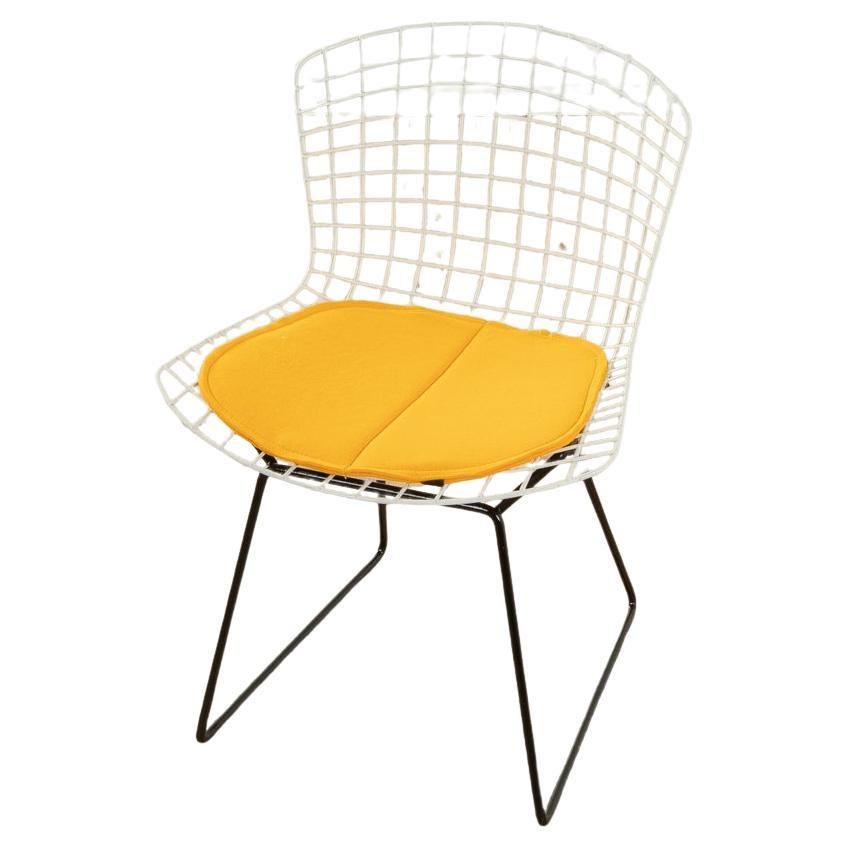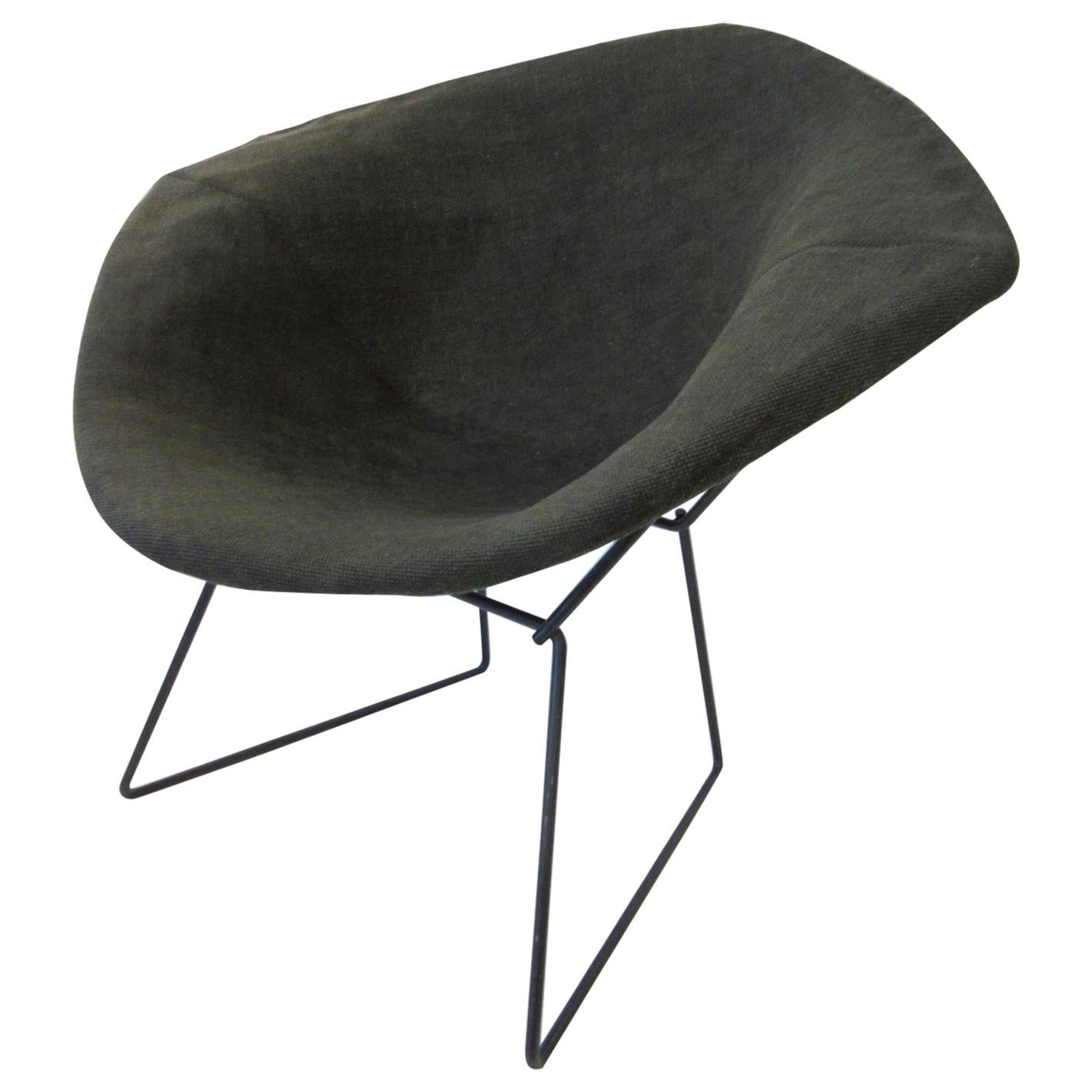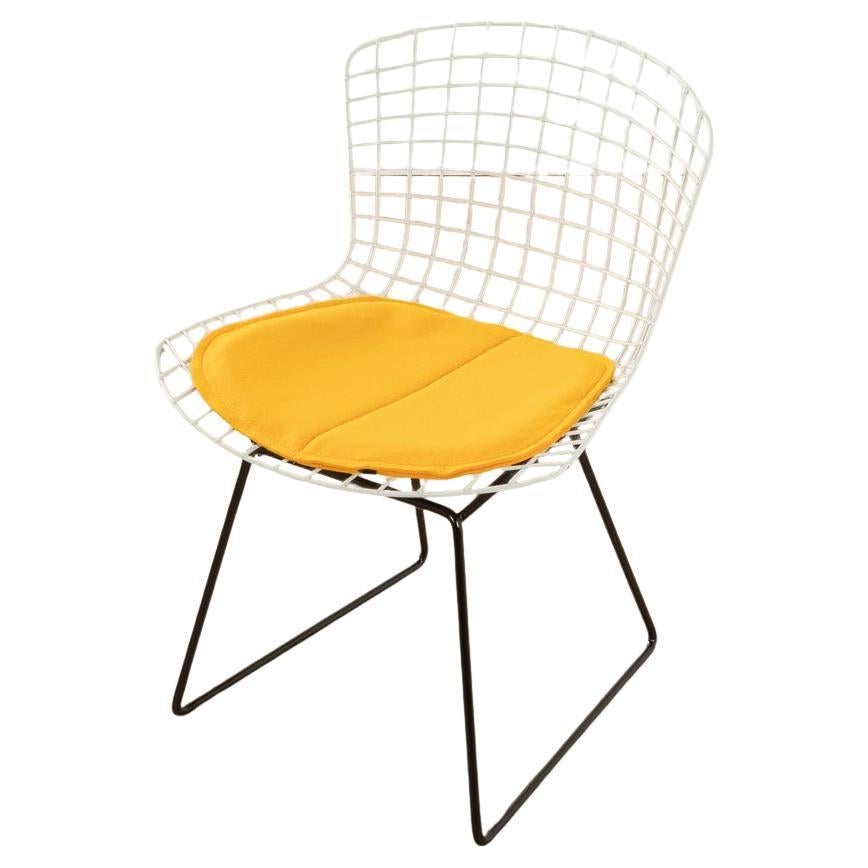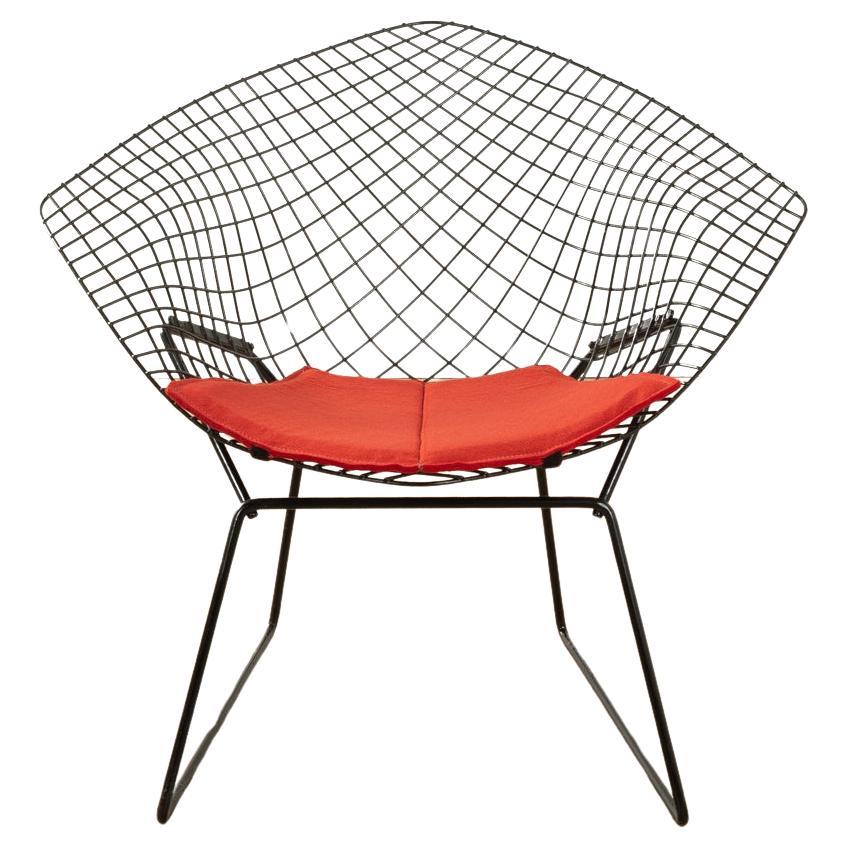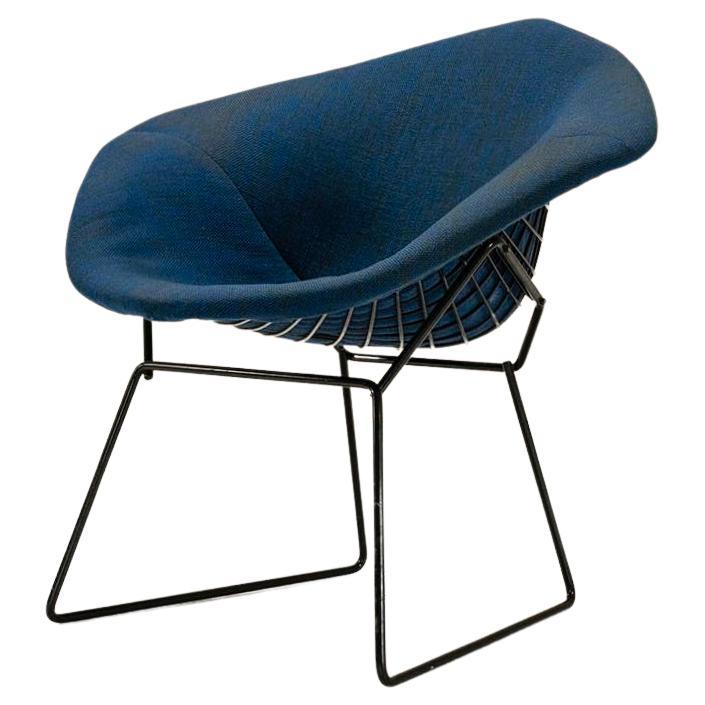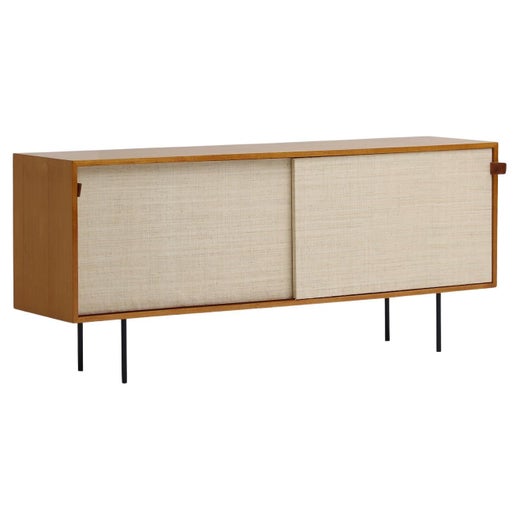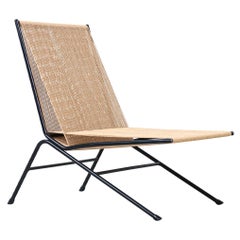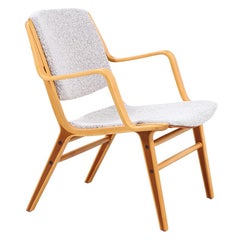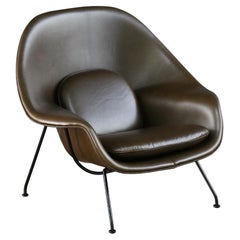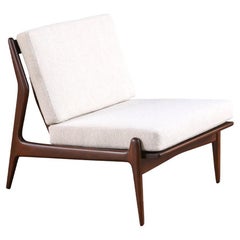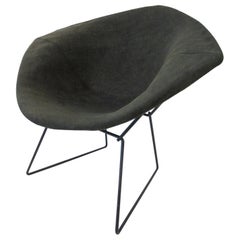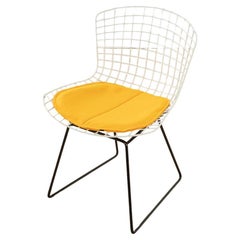Expertly Restored - Vintage Harry Bertoia Diamond Wire Chair for Knoll
About the Item
- Creator:Florence Knoll (Manufacturer),Harry Bertoia (Designer)
- Dimensions:Height: 30.5 in (77.47 cm)Width: 34 in (86.36 cm)Depth: 28.25 in (71.76 cm)Seat Height: 16.5 in (41.91 cm)
- Style:Mid-Century Modern (Of the Period)
- Materials and Techniques:
- Place of Origin:
- Period:
- Date of Manufacture:1950s
- Condition:Reupholstered. Newly Reupholstered. by Danish Modern LA’s Restoration Studio.
- Seller Location:Los Angeles, CA
- Reference Number:1stDibs: LU971138427232
Harry Bertoia
Sculptor, furniture and jewelry designer, graphic artist and metalsmith, Harry Bertoia was one of the great cross-disciplinarians of 20th-century art and design and a central figure in American mid-century modernism. Among furniture aficionados, Bertoia is known for his chairs such as the wire-lattice Diamond chair (and its variants such as the tall-backed Bird chair) designed for Knoll Inc. and first released in 1952.
As an artist, he is revered for a style that was his alone. Bertoia’s metal sculptures are by turns expressive and austere, powerful and subtle, intimate in scale and monumental. All embody a tension between the intricacy and precision of Bertoia’s forms and the raw strength of his materials: steel, brass, bronze and copper.
Fortune seemed to guide Bertoia’s artistic development. Born in northeastern Italy, Bertoia immigrated to the United States at age 15, joining an older brother in Detroit. He studied drawing and metalworking in the gifted student program at Cass Technical High School. Recognition led to awards that culminated, in 1937, in a teaching scholarship to attend the Cranbrook Academy of Art in suburban Bloomfield Hills, one of the great crucibles of modernism in America.
At Cranbrook, Bertoia made friendships — with architect Eero Saarinen, designers Charles and Ray Eames and Florence Schust Knoll and others — that shaped the course of his life. He taught metalworking at the school, and when materials rationing during World War II limited the availability of metals, Bertoia focused on jewelry design. He also experimented with monotype printmaking, and 19 of his earliest efforts were bought by the Guggenheim Museum.
In 1943, he left Cranbrook to work in California with the Eameses, helping them develop their now-famed plywood furniture. (Bertoia received scant credit.) Late in that decade, Florence and Hans Knoll persuaded him to move east and join Knoll Inc. His chairs became and remain perennial bestsellers. Royalties allowed Bertoia to devote himself full-time to metal sculpture, a medium he began to explore in earnest in 1947.
By the early 1950s Bertoia was receiving commissions for large-scale works from architects — the first came via Saarinen — as he refined his aesthetic vocabulary into two distinct skeins. One comprises his “sounding sculptures” — gongs and “Sonambient” groupings of rods that strike together and chime when touched by hand or by the wind. The other genre encompasses Bertoia’s naturalistic works: abstract sculptures that suggest bushes, flower petals, leaves, dandelions or sprays of grass.
As you will see on these pages, Harry Bertoia was truly unique; his art and designs manifest a wholly singular combination of delicacy and strength.
Find vintage Harry Bertoia sculptures, armchairs, benches and other furniture and art on 1stDibs.
Florence Knoll
Architect, furniture designer, interior designer, entrepreneur — Florence Knoll had a subtle but profound influence on the course of mid-century American modernism. Dedicated to functionality and organization, and never flamboyant, Knoll shaped the ethos of the postwar business world with her skillfully realized office plans and polished, efficient designs for sofas, credenzas, desks and other furnishings.
Knoll had perhaps the most thorough design education of any of her peers. Florence Schust was orphaned at age 12, and her guardian sent her to Kingswood, a girl’s boarding school that is part of the Cranbrook Educational Community in suburban Detroit. Her interest in design brought her to the attention of Eliel Saarinen, the Finnish architect and head of the Cranbrook Academy of Art.
Saarinen and his wife took the talented child under their wing, and she became close to their son, the future architect Eero Saarinen. While a student at the academy, Florence befriended artist-designer Harry Bertoia and Charles and Ray Eames. Later, she studied under three of the Bauhaus masters who emigrated to the United States. She worked as an apprentice in the Boston architectural offices of Walter Gropius and Marcel Breuer; Ludwig Mies van der Rohe taught her at the Illinois Institute of Technology.
In 1941, she met Hans Knoll, whose eponymous furniture company was just getting off the ground. They married in 1946, and her design sense and his business skills soon made Knoll Inc. a leading firm in its field. Florence signed up the younger Saarinen as a designer, and would develop pieces by Bertoia, Mies and the artist Isamu Noguchi.
Florence Knoll's main work came as head of the Knoll Planning Group, designing custom office interiors for clients such as IBM and CBS. The furniture she created for these spaces reflects her Bauhaus training: the pieces are pure functional design, exactingly built; their only ornament from the materials, such as wood and marble. Her innovations — the oval conference table, for example, conceived as a way to ensure clear sightlines among all seated at a meeting — were always in the service of practicality.
Since her retirement in 1965, Knoll received the National Medal of Arts, among other awards; in 2004 the Philadelphia Museum of Art mounted the exhibition “Florence Knoll: Defining Modern” — well deserved accolades for a strong, successful design and business pioneer. As demonstrated on these pages, the simplicity of Knoll’s furniture is her work’s great virtue: they fit into any interior design scheme.
Find vintage Florence Knoll sofas, benches, armchairs and other furniture on 1stDibs.
- ShippingRetrieving quote...Shipping from: Los Angeles, CA
- Return Policy
More From This Seller
View AllVintage 1950s American Mid-Century Modern Lounge Chairs
Iron
Vintage 1960s Danish Mid-Century Modern Lounge Chairs
Fabric, Foam, Laminate, Wood
Vintage 1940s American Mid-Century Modern Lounge Chairs
Steel
Vintage 1960s Danish Mid-Century Modern Lounge Chairs
Fabric, Foam, Wood, Beech, Walnut
Vintage 1950s Danish Mid-Century Modern Dining Room Chairs
Leather, Walnut
Vintage 1950s Danish Mid-Century Modern Lounge Chairs
Upholstery, Foam, Oak, Teak
You May Also Like
Mid-20th Century American Mid-Century Modern Lounge Chairs
Metal
Vintage 1940s American Mid-Century Modern Chairs
Metal
Mid-20th Century American Mid-Century Modern Lounge Chairs
Wire
Vintage 1940s American Mid-Century Modern Chairs
Metal
Vintage 1940s American Mid-Century Modern Chairs
Metal
Vintage 1950s American Mid-Century Modern Lounge Chairs
Metal
